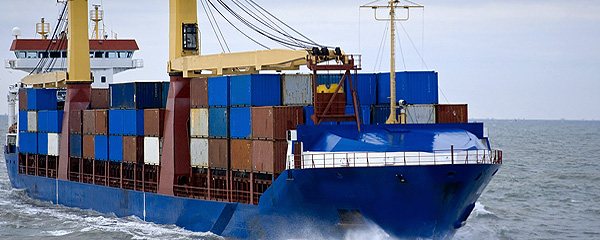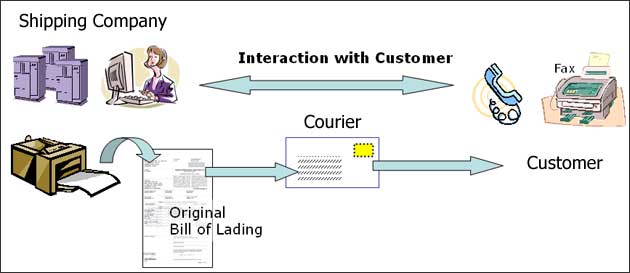16
Jan 2015
The Chinese Freight Forwarders Scam
In the last few years we’ve witnessed a sharp rise in the frauds made by scammers in the freight forwarding industry in China. These frauds are done by small international freight forwarding companies in China with the focus of sea freight shipments – EX China main Sea ports.
These companies often contact importers around the world through targeted E-mail marketing campaigns, Advertisments in B2B websites and other online platforms, and they offer really low rates for sea freight operations from Chinese main ports.
The internet is full with cases of these companies (which have performed the above frauds).Lately we have been hearing some of those scammers even appear on Alibaba(B2B platform). Importers are calling out for help.
The sad thing about this whole matter is the fact that not even one case was solved. Why is that?
As you all know, China is the world’s biggest exporter with thousands (!!!) of local freight forwarders ranging from the smallest companies to the biggest.
For our case – one person sitting in front of his home computer, who uses intermediate agents to move cargo around the world, can also be considered as a small company and there is a massive amount of these so called “freight forwarders” in China. Obviously there are a LOT of professional genuine local freight forwarders and agents in China, but there are also some scammers who commit sophisticated frauds and extort thousands of dollars from every client who falls into their hands.
So, what’s really going on here?
The scammers exploit the international trade laws and sea transit processes.
This is how it’s done:
1. The importer orders the goods from his supplier and pays for it.
2. Afterwards, the Chinese supplier produces the goods and informs the importer of its readiness date.
3. When the cargo is under EXW or FOB term (nowadays most of the shipments from China are under these terms), the importer will approach his new Chinese forwarder (the scammer) who has offered him extremely attractive rates! And then will ask him to operate the shipment which is ready at the supplier’s warehouse.
4. The importer will pay his new Chinese forwarder the rate as agreed for the transit and then the process will commence
5. The scammer prepares the Bill of Lading and sends his new client copies of the B/L and the export docs, such as commercial invoice and packing list. So far everything is in order and it’s indeed in order……so it seems to the importer.
It’s important to mention that so far, everything done by the forwarder is legitimate and nothing is unusual.
6. The cargo was picked up at the importer’s request and was boarded on a ship, the importer receives copies of the export docs and the ship sails to its destination.
7. The interesting part begins when the importer notices that the ORIGINAL sea BILL OF LADING hasn’t arrived by mail, or that the ship has already reached its destination but the importer still doesn’t have the ORIGINAL Bill of Lading
The importer knows very well that he can’t claim ownership on the goods without the original B/L, and thus he won’t be able to release it from customs. On this exact principle are built most of the forwarders’ frauds in China.
8. At this point, the importer turns to the Chinese forwarder asking to send the original B/L immediately because the goods can’t be released without it and it’s also starting to accumulate expensive storage days in the port.
And then the Chinese forwarder’s true colors are revealed.
The forwarder suddenly asks more money for sending the original B/L – we witness ransom requests that range from 900 to 35,000 $ for a single shipment!
Just so the Forwarder will send the original bill of lading
In our line of work with importers all around the world we’ve encountered cases, in which the forwarders rationalized the extra payment by peak season or an emergency transfer that was required in moving the container from the factory to the port. We’ve also heard about new port taxes, and you may find it hard to believe, but we were also told about Chinese port gangs stories, who demand ransom from the forwarder himself……these excuses are endless and the importer is left helpless, with a container full of merchandise in his home port, without any ability to release it and with accumulating storage days and raging clients who await their cargo.
In the first few years this fraud had taken place, the client was able to turn to the shipping company with which the transportation took place, prove he was a victim of fraud and after endless meetings, lawyers, trials and total waste of expensive time and money, maybe.. just maybe he would have received the original B/L from the shipping company.
Today, the forwarders who look to exploit their clients send one shipment with several shipping companies and thus make the above solution irrelevant.
The fact that the cargo was picked up in China and was indeed transferred via sea to its destination port, doesn’t imply physical theft of the merchandise or breaking any law, and thus this puts the crime in a gray area which is very hard to prove in court.
Check the next post about how to avoid these kinds of frauds!
Source: LinkedIN Pulse
See more at sbeinspection.com
































